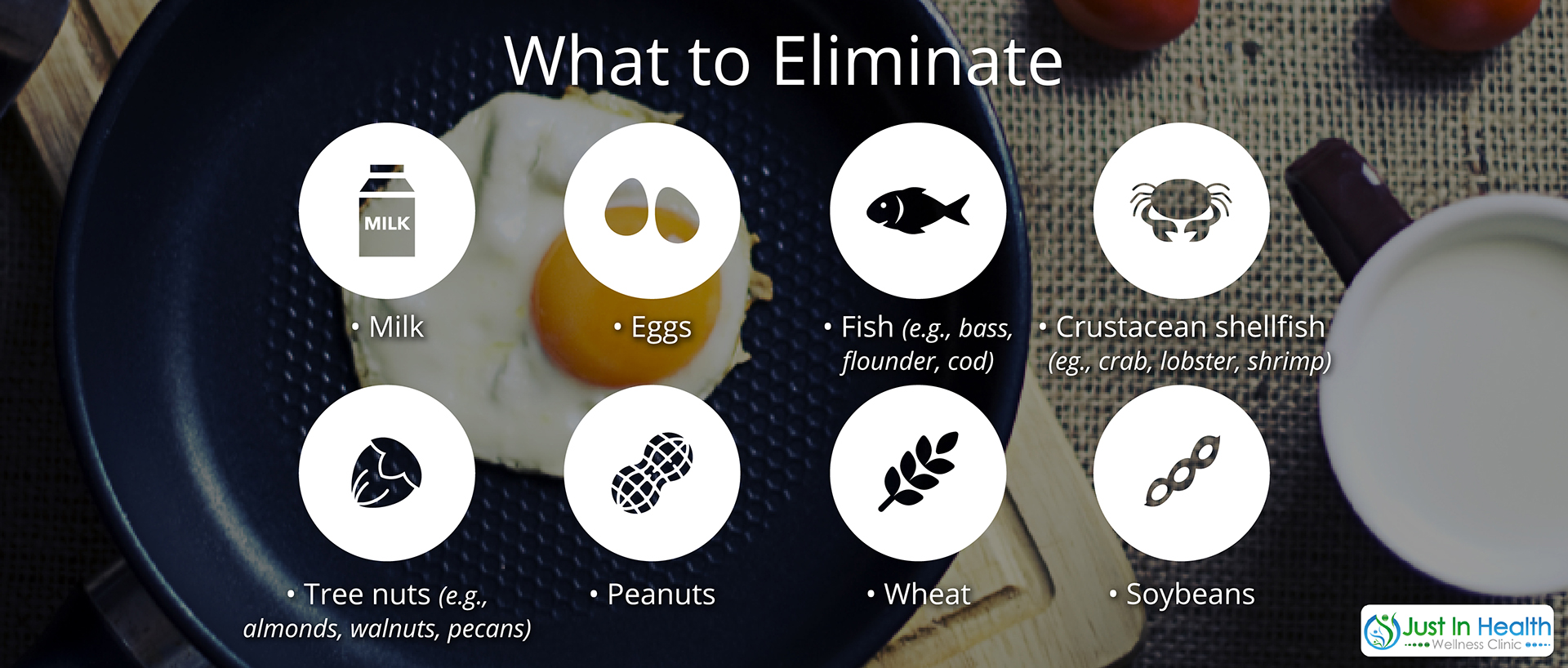

By Dr. Justin Marchegiani

An elimination diet is an eating plan whose goal is to determine food allergies and intolerances. It is a short-term plan, usually lasting between 3-6 weeks, that allows a person to learn which foods may be causing digestive distress, skin irritation, and brain fog. In an elimination diet, certain foods are cut out of the diet for a few weeks, before being slowly reintroduced, one-by-one, in order to pinpoint troublesome foods.

The law requires foods to be labeled if they contain common allergens. The eight foods identified by the FDA are:
These eight foods constitute over 90% of allergic reactions! However, allergy tests don’t pick up on food intolerances and sensitivities.
Foods to eliminate in a food elimination diet include some of the common allergens listed above: gluten, dairy, soy, and nuts, but also encompass the common culprits of inflammation, digestion issues, and brain fog. These include nightshades (eggplant, peppers, tomatoes, and potatoes), alcohol, and processed sugar!

Eliminating sources of inflammation will allow your body to heal and can enact a plethora of positive changes within your body.
Recovery from Leaky Gut Syndrome: Leaky gut occurs when the intestinal lining becomes inflamed, which can be caused by the consumption of gluten, sugar, or other foods you are sensitive to. The inflamed gut lining allows food particles and other toxins to slip through into the bloodstream, creating more inflammation. By eliminating the foods that cause the gut to become inflamed, it is possible to break the cycle and heal your gut!
Reduce skin irritations, such as eczema and acne: Dairy and grains are two food groups which studies have shown have a strong link to acne and other skin irritations. Try cutting them out of your diet and watch your skin clear up in just a few weeks.
Prevent/treat learning and attention disorders: Studies have shown that a strict elimination diet can treat symptoms of (and in some cases defeat!) ADHD. There is promising research showing that even just avoiding artificial colors and preservatives can also lessen symptoms.
Reduce migraines: You may have heard the gut referred to as the “second brain.” In addition to all the functions, the gut is in control of, the gut actually communicates with your brain as well! An inflamed gut (due to consuming “bad” foods), can send signals to your brain signaling migraines and headaches.
Reduce bloating, diarrhea, and constipation: We’ve all experienced the feeling in our stomach after eating something we know we shouldn’t have had. Eating problem foods causes a relatively immediate stomach ache and possibly diarrhea, but regularly eating foods you are sensitive to – even unknowingly – can actually cause long term gastrointestinal distress! People who have gone on food elimination diets often say they didn’t know there was something wrong until they cut out the foods that were causing them to suffer. It’s like a weight lifted from your shoulders!
Bonus: add in a quality probiotic supplement to help your good gut bacteria rebuild!
Help heal autoimmune conditions: Food sensitivities can create and worsen autoimmune disease. Not only is it possible to stop the severity of your autoimmune disease from worsening, but it is even possible to reverse your autoimmune disease by removing inflammatory problem foods!

If you suffer from digestive distress, skin breakouts, rashes, or suspect you might have a food allergy or intolerance, an elimination diet is always a good idea. The antibodies your immune system makes when it reacts to a problematic food you’ve eaten take about 3 weeks to dissipate; imagine feeling like a whole new person in only 3 weeks!
A food elimination diet generally last between 3-6 weeks, and can focus on one or two specific foods, or it can target a wide range of foods. For a preview of what an elimination diet looks like, and when to add foods back in, check out our post outlining what you can eat and when you should reintroduce foods.
Consult with a healthcare professional to determine your best plan of action!
REFERENCES:
https://www.ncbi.nlm.nih.gov/pmc/articles/PMC4268641/
https://www.fda.gov/food/resourcesforyou/consumers/ucm079311.htm
https://www.ncbi.nlm.nih.gov/pubmed/17229899